 Duck Hunt
Duck Hunt42%
Documenting, rating, and ranking every video game I've ever owned. (check out Movie ratings too)
 Duck Hunt
Duck Hunt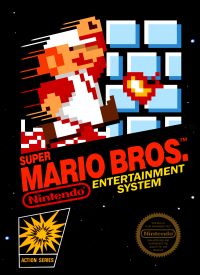 Super Mario Bros.
Super Mario Bros. Castlevania
Castlevania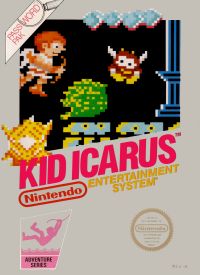 Kid Icarus
Kid Icarus Mike Tyson’s Punch-Out!!
Mike Tyson’s Punch-Out!! Super Mario Bros. 2
Super Mario Bros. 2 Dragon Warrior
Dragon Warrior Tetris
Tetris Super Mario Bros. 3
Super Mario Bros. 3 Batman
Batman Dragon Warrior II
Dragon Warrior II Castlevania III: Dracula's Curse
Castlevania III: Dracula's Curse Battletoads
Battletoads Dragon Warrior III
Dragon Warrior III Dragon Warrior IV
Dragon Warrior IV Prince of Persia
Prince of Persia Super Mario World
Super Mario World Mario Paint
Mario Paint Street Fighter II Turbo: Hyper Fighting
Street Fighter II Turbo: Hyper Fighting Super Street Fighter II
Super Street Fighter II Tetris 2
Tetris 2 Illusion of Gaia
Illusion of Gaia Super Punch-Out!!
Super Punch-Out!! Final Fantasy iii
Final Fantasy iii Donkey Kong Country
Donkey Kong Country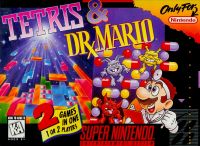 Tetris and Dr. Mario
Tetris and Dr. Mario Donkey Kong Country 2: Diddy’s Kong Quest
Donkey Kong Country 2: Diddy’s Kong Quest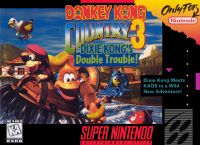 Donkey Kong Country 3: Dixie Kong’s Double Trouble
Donkey Kong Country 3: Dixie Kong’s Double Trouble F-Zero: Maximum Velocity
F-Zero: Maximum Velocity Mario Kart Super Circuit
Mario Kart Super Circuit Super Mario World: Super Mario Advance 2
Super Mario World: Super Mario Advance 2 Warioware, Inc.: Mega MicroGame$!
Warioware, Inc.: Mega MicroGame$! Super Mario Advance 4: Super Mario Bros. 3
Super Mario Advance 4: Super Mario Bros. 3 Mario vs. Donkey Kong
Mario vs. Donkey Kong Super Mario 64
Super Mario 64 Diddy Kong Racing
Diddy Kong Racing WCW vs. nWo: World Tour
WCW vs. nWo: World Tour WCW/nWo Revenge
WCW/nWo Revenge WWF Wrestlemania 2000
WWF Wrestlemania 2000 Donkey Kong 64
Donkey Kong 64 WWF No Mercy
WWF No Mercy Mario Kart DS
Mario Kart DS Tetris DS
Tetris DS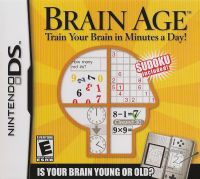 Brain Age: Train Your Brain in Minutes A Day!
Brain Age: Train Your Brain in Minutes A Day! New Super Mario Bros.
New Super Mario Bros. Big Brain Academy
Big Brain Academy Resident Evil
Resident Evil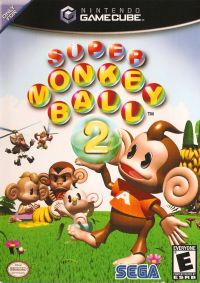 Super Monkey Ball 2
Super Monkey Ball 2 Super Mario Sunshine
Super Mario Sunshine Mario Party 4
Mario Party 4 Metroid Prime
Metroid Prime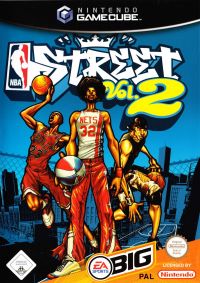 NBA Street Vol. 2
NBA Street Vol. 2 Def Jan Vendetta
Def Jan Vendetta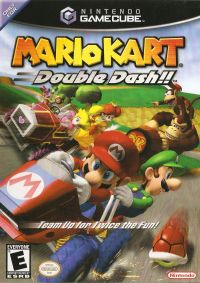 Mario Kart: Double Dash!!
Mario Kart: Double Dash!! Metroid Prime 2: Echoes
Metroid Prime 2: Echoes Resident Evil 4 (Gamecube)
Resident Evil 4 (Gamecube) NBA Street V3
NBA Street V3 NBA Live 06
NBA Live 06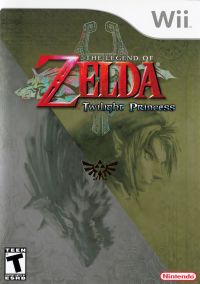 The Legend of Zelda: Twilight Princess
The Legend of Zelda: Twilight Princess Wii Sports
Wii Sports Warioware: Smooth Moves
Warioware: Smooth Moves Resident Evil 4: Wii Edition
Resident Evil 4: Wii Edition Guitar Hero III: Legends of Rock
Guitar Hero III: Legends of Rock Super Mario Galaxy
Super Mario Galaxy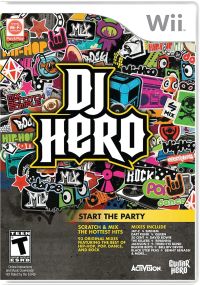 DJ Hero
DJ Hero Wii Party
Wii Party Nintendo Land
Nintendo Land Wii Party U
Wii Party U Wii Sports Club
Wii Sports Club NES Remix
NES Remix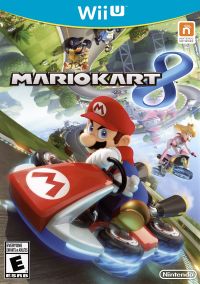 Mario Kart 8
Mario Kart 8 Super Mario Maker
Super Mario Maker Bioshock
Bioshock Uncharted: Drake's Fortune
Uncharted: Drake's Fortune Resident Evil 5
Resident Evil 5 Uncharted 2: Among Thieves
Uncharted 2: Among Thieves Limbo
Limbo Catherine
Catherine Resident Evil 4 (PS3)
Resident Evil 4 (PS3) Uncharted 3: Drakes Deception
Uncharted 3: Drakes Deception Resident Evil 6
Resident Evil 6 Bioshock Infinite
Bioshock Infinite Resident Evil: Revelations
Resident Evil: Revelations The Last of Us
The Last of Us The Last of Us Remastered
The Last of Us Remastered Grand Theft Auto V
Grand Theft Auto V Rocket League
Rocket League Journey
Journey The Talos Principle
The Talos Principle The Witness
The Witness Firewatch
Firewatch Uncharted 4: A Thief's End
Uncharted 4: A Thief's End Inside
Inside Resident Evil 4 (PS4)
Resident Evil 4 (PS4) Resident Evil 7: Biohazard
Resident Evil 7: Biohazard Wipeout: Omega Collection
Wipeout: Omega Collection Uncharted: The Lost Legacy
Uncharted: The Lost Legacy Resident Evil 2
Resident Evil 2 Resident Evil 3
Resident Evil 3 The Last of Us Part II
The Last of Us Part II Resident Evil Village
Resident Evil Village What Remains of Editch Finch
What Remains of Editch Finch Astro's Playroom
Astro's Playroom The Last of Us Part 1
The Last of Us Part 1 Resident Evil 4 (PS5)
Resident Evil 4 (PS5) Cocoon
Cocoon Animal Well
Animal Well Riven: The Sequel to Myst
Riven: The Sequel to Myst Myst III: Exile
Myst III: Exile Portal
Portal Braid
Braid Portal 2
Portal 2 The Stanley Parable
The Stanley Parable Fez
Fez The Legend of Zelda: Breath of the Wild
The Legend of Zelda: Breath of the Wild Super Mario Odyssey
Super Mario Odyssey Human Fall Flat
Human Fall Flat Little Nightmares: Complete Edition
Little Nightmares: Complete Edition Gone Home
Gone Home Super Mario Party
Super Mario Party Resident Evil 4 (Switch)
Resident Evil 4 (Switch) Super Mario Maker 2
Super Mario Maker 2 Untitled Goose Game
Untitled Goose Game Ring Fit Adventure
Ring Fit Adventure Disney Classic Games: Aladdin and The Lion King
Disney Classic Games: Aladdin and The Lion King The Turing Test
The Turing Test Animal Crossing: New Horizons
Animal Crossing: New Horizons Good Job!
Good Job!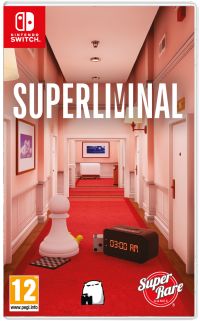 Superliminal
Superliminal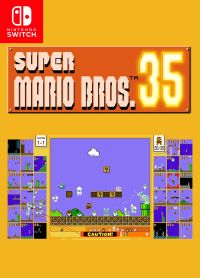 Super Mario Bros. 35
Super Mario Bros. 35 Nintendo Switch Sports
Nintendo Switch Sports Portal Companion Collection
Portal Companion Collection Metroid Prime Remastered
Metroid Prime Remastered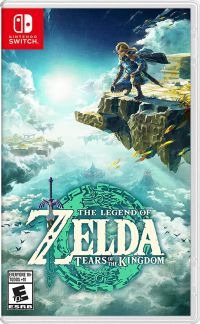 The Legend of Zelda: Tears of the Kingdom
The Legend of Zelda: Tears of the Kingdom Super Marios Bros. Wonder
Super Marios Bros. WonderGames are rated by a set of 10 criteria:
Each category is rated out of 10 possible points, and then totaled together to create a score out of 100. This is the final percentage score.
In most cases, remakes and remasters will replace the original game. There may be exceptions to this (the upcoming Resident Evil 4 being a case for this, since the “remake” also introduces new elements). Anything that introduces new gameplay and new areas will be rated as a completely new game.
The top 10 is scored a bit differently to present a clear and consistent separation of the best-of-the-best. The scoring is a sum of: